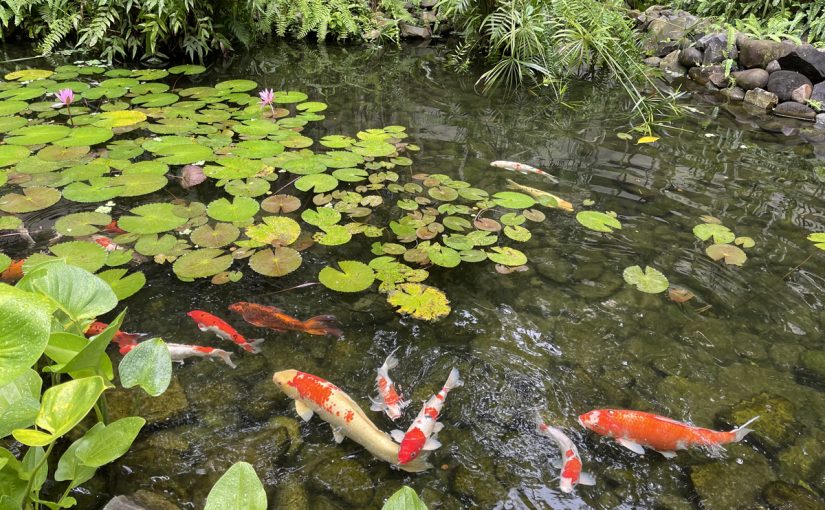The experts recommend a koi pond be at least 3 feet deep. However, this is simply meeting the minimum requirement for koi ponds.
How Deep Should A Pond Be For Koi?
It’s no secret that Koi fish need a lot of space to swim. 1,000-plus gallons is considered the ideal size for a Koi pond. This means a six foot by eight foot pond will yield 1,077 gallons.
A pond of the aforementioned size is enough for no more than five average sized Koi fish. The more Koi you add to the pond, the larger the area needs to be. For example, 15 Koi means your pond should be at least 3,200 gallons.
Koi Pond Fundamentals
Your koi pond needs to be designed properly for your fish to thrive. Many professionals will recommend that your pond meet set criteria to be able to provide the best situation for your fish. Normally koi ponds are larger than a fishless pond.
Size Requirements:
• No less than 1,000 gallons.
• 3 or more feet deep.
• 25 square feet of pond for each koi.
It is vital that you know that fish will need to have some sort of shade. If the pond happens to get direct sunlight, then you should consider floating plants such as water lilies. Most of the pond surface needs to be shaded to give your koi a comfortable place to escape the sun. Another benefit of plants is that they give them a place to hide from predators.
Water plants are essential. Aquatic plants will help to balance the ecosystem which helps to create a natural home for your fish. There are some plants that are oxygenators which mean that they put oxygen in the water, which the fish can breathe. Koi also eat many types of water plants.
Fish don’t need to be fed as long as the pond isn’t over stocked as they can live off algae, insects and other food in the environment. Certain plants can be included as a food source.
Filtration
Good pond filters will help to keep your pond clean and clear. Koi provide a lot of waste which means that a filter is needed. There are 2 types of filtration: biological and mechanical.
Mechanical filtration will trap fish waste and debris. Skimmers, pump baskets, and bottom drains are great for mechanical filtration. Biological filters use beneficial bacteria to turn toxins into harmless substances.
Aeration
Fish will need oxygen to survive. Based on your pond size, the amount of plants that are growing and how many fish you have may cause you to need aeration. This is a process of circulating oxygen into the pond water.
Fountains and waterfalls are pleasing ways to aerate a pond. The water motion will allow natural circulation of oxygen. You may even begin to consider adding equipment to aerate your pond. These jets or pumps are great if you have large fish or live in hot climates.
Water Quality
Your pond water quality will impact your fish health. You will want to keep an eye on the pH levels and water temperature. The ideal temperature for your koi is between 39 F to 68 F. The deeper the water is, the easier it is to regulate the pond temperature.
The best pH for your pond is between 7.0 – 7.8.
You should be aware that chlorine will hurt your koi, it burns the gills of your fish and leads to death. It is for this reason that you need to wait more than a week after putting chlorine in your pond before you stock it with fish. If you don’t want to wait, you can purchase a dechlorinator.
Phoenix Area Pond Supply
If you are looking for live fish, live plants, pond filtration, pumps, or anything else you need to start or care for your water garden or garden pond The Backyard Pond has everything you need. We serve residents of the greater Phoenix area with the best selection of Koi, plants, and all the supplies you need. Stop by or give us a call at 623-878-6695 with your questions.
